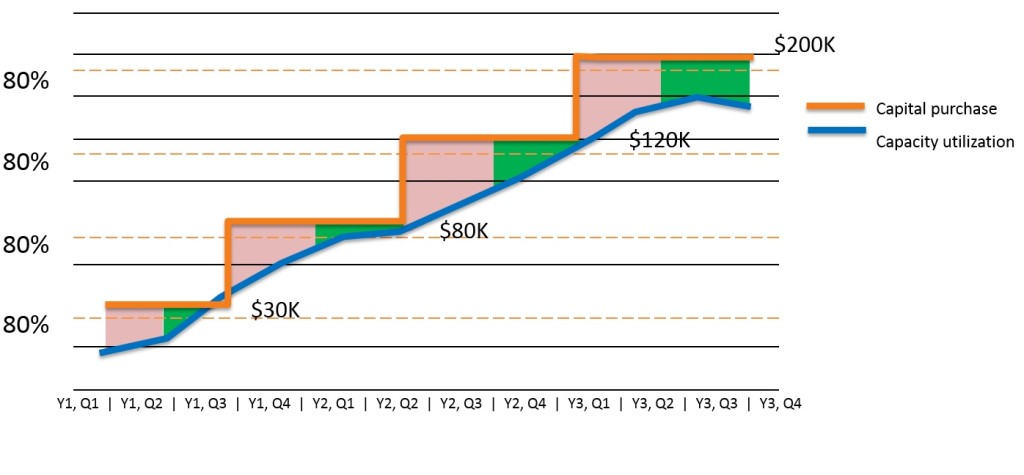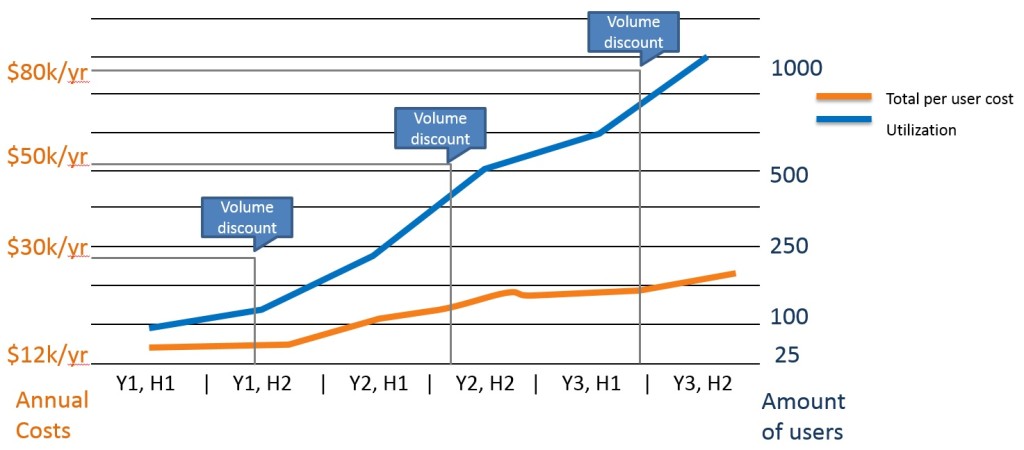Tags : Budget Finance
Practically every business these days spends a sufficient amount of money on technology, however surprisingly few have a healthy technology budget. Either they are spending more on products, services and overhead than the solution saves them, or they don’t spend enough to keep systems and applications running efficiently. Move over, many business are still not taking full advantage of the Cloud.
There are many reasons for this. The most obvious is that Technology Professionals are not typically versed in business (and often don’t care to be). Another is that the environment is changing so rapidly that it’s almost insurmountable for a business decision maker to understand the options that are out there. There are a lot of Consulting agents willing to help, but not all of them take a holistic approach to planning a technology budget.
Identify the Business Requirement
In order to adequately evaluate the solutions in place, it’s necessary to have a clear understanding of the process that the solution is here to solve. Take the focus off the technology, infrastructure and product and move it toward the specific part of the business process that it addresses.
Understand your TCO
Many times we get sticker shock when we look at certain solutions which can force us to scale down and ultimately end up with a solution that costs more to operate and support then it would to just purchase the right product or service. It’s thus important to have a full understanding of the Total Cost of Ownership for the product in question. Cheap or free can sometimes lead to huge support costs and unexpected downtime.
Long Term Planning
To be effective and still keep up with the changing landscape, I’ve found it’s important to look at the long term. When I say “long term” in technology, I’m talking 3-5 years. Depreciation cycles should be set at roughly 3 years. Contracts are best as a 1 or 2 year, though there can be massive savings available with a 3+ year contract.
All of this should be re-evaluated every year to make sure the costs and technologies match the offers available. When signing a long-term contract, always make sure you know what options are available to terminate early. For example, you may want to term the contract in a year because you are moving offices. In this case, you have two options. One is to transfer the service to your new location, the other is to end it completely. If you’re moving out of an area serviced by that vendor, you have no option but to terminate it.
Vendors should have provisions in their contracts for early termination. There may be an early termination fee. This cost should be factored in as a risk when the contract is signed. They may also offer a way to move service to your new location for free. To determine the value of this, make sure you know what the cost of that move would be if that offer wasn’t on the table.
Utilize the Cloud
Cloud Computing has commoditized technology, but it’s costs need to be controlled. See Time for IT to Rein In Cloud Computing Control. Cloud services can really help get costs under control. I’m not talking the generic “OpEx vs. CapEx” discussion that most Cloud Consultants use. That discussion is for another day. I’m talking about the costs of building an infrastructure and the costs of maintaining that infrastructure vs. paying for what you use when you use it.
Consider this. Before the cloud, we used to have to spend a lot of time defining the architecture, spec’ing out the right services, building up the servers, network, and access control, and planning for disaster recovery, backups & antivirus before we even install the first application. The graph below is an example of what those costs look like. It starts with a large expense in the form of hardware, software and often services. This expense offers virtually no value to the organization. Next, IT spends time installing and configuring applications and services to bring the solution to life and then starts rolling it out to end users. In the graph below, the orange lines equate to large purchases, while the blue line is the utilization of the service.

I know that the math geeks out there are going to cry foul on these charts. That they’re generic and don’t represent re-world scenarios. I agree. Real costs can fluctuate greatly, but it does provide a model to compare how costs relate to utilization so bear with me.
Once end users start using the solution, the value of it starts to grow. The green shaded areas indicate where the solution is adding it’s most value, while the red regions show where the costs exceed the value. The more the utilization, the higher the value, however, once the utilization reaches a certain point, the infrastructure can’t keep up with the demand and performance suffers. Until another large expense is allocated. Then the costs out-weigh the utilization and the process starts all over. Meanwhile the costs keep going up. Sound familiar?
Software As A Service
Under the Software As A Service (SAAS) model, your costs are directly proportional to the utilization and the net value of the services is more directly propositional to the costs. Again, please excuse the generic graph.

This is the real value of the Cloud. This is a Rent vs. Buy discussion. Think about a house. It’s a big expense. Much bigger than a rental, but you build up equity the more you put into it. Plus, unless you’re in a depressed area, the value of your house appreciates over time.
Now compare that to a car. The car depreciates in value the minute you drive it off the lot and continues to depreciate every year. Even if you don’t drive it. Leasing might be the better option from a purely financial aspect. No dollar you put into your car is coming back to you in 10 years.
Comparatively, the same happens with infrastructure. Your technology infrastructure will continue to depreciate until it becomes an expense to just keep it around. And it will depreciate at a faster rate than your car. Retiring old infrastructure can be quite costly as well.
Factor in Administrative Costs
Ever take a real look at how much time and money is put into supporting your technology infrastructure. The orange region of the chart below relate to overhead costs to support power and cooling, hardware maintenance, patching, virus protection, backups, fail over, remediation testing and upgrades. These are the area’s most IT departments spend a majority of their time. It’s important to note, that none of the tasks I just mentioned add any value to the business at all. The value add starts above the red line. To run an effective IT shop, you have to manage where that line is. The upper layers include software configuration, application customization and service provisioning which is where IT becomes a strategic asset to the company.

When you buy applications as a service, the orange region goes away and IT is working strictly as a strategic asset. The overhead costs are greatly diminished. Plus, when a better solutions comes around, you simply stop service on the old solution. There’s nothing to retire.
Long Term Planning
To be effective and still keep up with the changing landscape, it’s important to look at the long term. Contracts & solutions should be re-evaluated every year to make sure the costs and technologies match the offers available. When signing a long-term contract, always make sure you know what options are available for you to terminate early. For example, you may want to term the contract in a year because you are moving offices. In this case, you have two options. One is to transfer the service to your new location, the other is to end it completely. If you’re moving out of an area serviced by that vendor, you have no option but to terminate it.
Vendors should have provisions in their contracts for early termination. There may be an early termination fee. This cost should be factored in as a risk when the contract is signed. They may also offer a way to move service to your new location for free. To determine the value of this, make sure you know what the cost of that move would be if that offer wasn’t on the table.
Summary
The main point of this post is that your technology budget is a large part of your operating costs. With the right consideration and long-term planning, it can be managed in such a was as to keep the companies finances in order and add value to the organization A good technology consultant who is focused on the business should be able to help you see the long-term hard and soft costs and assist with negotiating the best contracts on your behave.









